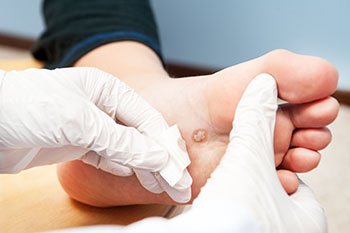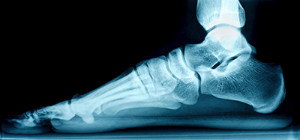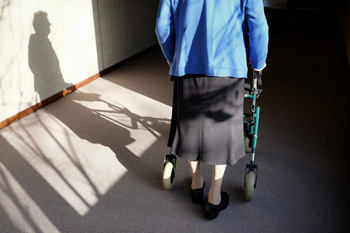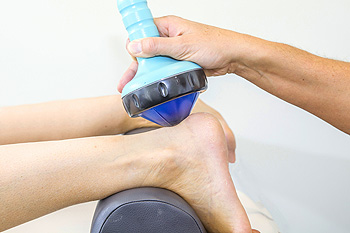Items filtered by date: June 2021
An Overview of Plantar Warts
 Plantar warts are benign skin growths that occur on the soles of the feet due to a human papillomavirus (HPV) infection. HPV can get into the feet through a tiny crack in the skin and make the top layer of skin grow rapidly, thereby creating a wart. Warts on the bottom of the feet may be asymptomatic, or they may cause pain or discomfort while standing or walking due to pressure on the bottom of the foot. Plantar warts can typically be diagnosed through a physical examination and can be treated through medications, cryotherapy, or surgical removal. If you have plantar warts, consult with a podiatrist to find the right treatment for you.
Plantar warts are benign skin growths that occur on the soles of the feet due to a human papillomavirus (HPV) infection. HPV can get into the feet through a tiny crack in the skin and make the top layer of skin grow rapidly, thereby creating a wart. Warts on the bottom of the feet may be asymptomatic, or they may cause pain or discomfort while standing or walking due to pressure on the bottom of the foot. Plantar warts can typically be diagnosed through a physical examination and can be treated through medications, cryotherapy, or surgical removal. If you have plantar warts, consult with a podiatrist to find the right treatment for you.
Plantar warts can be very uncomfortable. If you need your feet checked, contact Leonora Fihman, DPM from California. Our doctor will assist you with all of your foot and ankle needs.
About Plantar Warts
Plantar warts are the result of HPV, or human papillomavirus, getting into open wounds on the feet. They are mostly found on the heels or balls of the feet.
While plantar warts are generally harmless, those experiencing excessive pain or those suffering from diabetes or a compromised immune system require immediate medical care. Plantar warts are easily diagnosed, usually through scraping off a bit of rough skin or by getting a biopsy.
Symptoms
- Lesions on the bottom of your feet, usually rough and grainy
- Hard or thick callused spots
- Wart seeds, which are small clotted blood vessels that look like little black spots
- Pain, discomfort, or tenderness of your feet when walking or standing
Treatment
- Freezing
- Electric tool removal
- Laser Treatment
- Topical Creams (prescription only)
- Over-the-counter medications
To help prevent developing plantar warts, avoid walking barefoot over abrasive surfaces that can cause cuts or wounds for HPV to get into. Avoiding direct contact with other warts, as well as not picking or rubbing existing warts, can help prevent the further spread of plantar warts. However, if you think you have developed plantar warts, speak to your podiatrist. He or she can diagnose the warts on your feet and recommend the appropriate treatment options.
If you have any questions please feel free to contact our offices located in Encino and Brentwood, Los Angeles, CA . We offer the newest diagnostic and treatment technologies for all your foot and ankle needs.
Seeing a Podiatrist for Plantar Fasciitis
Plantar fasci itis is the inflammation of the plantar fascia, which is the band of tissue that runs along the bottom of the foot from the heel to the toes. A common sign of plantar fasciitis is pain in the heel as well as the arch of the foot. The pain is usually worse when taking your first few steps right after sleeping or resting, and it may ease during exercise and worsen afterwards. Common risk factors for plantar fasciitis include exercising with a tight calf, recently starting to exercise on hard surfaces, wearing shoes with poor support, and being overweight. Patients who have heel pain that is stopping them from doing daily activities, that keeps getting worse, has not improved, or who also have diabetes should consult with a podiatrist for a proper diagnosis and treatment for the pain.
itis is the inflammation of the plantar fascia, which is the band of tissue that runs along the bottom of the foot from the heel to the toes. A common sign of plantar fasciitis is pain in the heel as well as the arch of the foot. The pain is usually worse when taking your first few steps right after sleeping or resting, and it may ease during exercise and worsen afterwards. Common risk factors for plantar fasciitis include exercising with a tight calf, recently starting to exercise on hard surfaces, wearing shoes with poor support, and being overweight. Patients who have heel pain that is stopping them from doing daily activities, that keeps getting worse, has not improved, or who also have diabetes should consult with a podiatrist for a proper diagnosis and treatment for the pain.
Plantar fasciitis is a common foot condition that is often caused by a strain injury. If you are experiencing heel pain or symptoms of plantar fasciitis, contact Leonora Fihman, DPM from California. Our doctor can provide the care you need to keep you pain-free and on your feet.
What Is Plantar Fasciitis?
Plantar fasciitis is one of the most common causes of heel pain. The plantar fascia is a ligament that connects your heel to the front of your foot. When this ligament becomes inflamed, plantar fasciitis is the result. If you have plantar fasciitis you will have a stabbing pain that usually occurs with your first steps in the morning. As the day progresses and you walk around more, this pain will start to disappear, but it will return after long periods of standing or sitting.
What Causes Plantar Fasciitis?
- Excessive running
- Having high arches in your feet
- Other foot issues such as flat feet
- Pregnancy (due to the sudden weight gain)
- Being on your feet very often
There are some risk factors that may make you more likely to develop plantar fasciitis compared to others. The condition most commonly affects adults between the ages of 40 and 60. It also tends to affect people who are obese because the extra pounds result in extra stress being placed on the plantar fascia.
Prevention
- Take good care of your feet – Wear shoes that have good arch support and heel cushioning.
- Maintain a healthy weight
- If you are a runner, alternate running with other sports that won’t cause heel pain
There are a variety of treatment options available for plantar fasciitis along with the pain that accompanies it. Additionally, physical therapy is a very important component in the treatment process. It is important that you meet with your podiatrist to determine which treatment option is best for you.
If you have any questions, please feel free to contact our offices located in Encino and Brentwood, Los Angeles, CA . We offer the newest diagnostic and treatment technologies for all your foot care needs.
Characteristics and Causes of Flat Feet
 Flat feet are common, affecting approximately 30% of the population. The term flat foot is used to describe a foot structure in which there is no visible arch in the center sole of the foot while bearing weight. In other words, the entire sole of the foot touches the ground when standing. People with flat feet may also notice that their heels point outward from the ankle and that their feet may be floppy. There are two main reasons why someone might have flat feet. One is due to the inner part of the foot, known as the medial column, having too much motion. This causes the arch of the foot to collapse over time. The other reason is because of tight calf muscles, which set off a cascade of biomechanical issues that ultimately lead to the arch collapsing. If you have flat feet and notice symptoms such as pain and discomfort, please seek the care of a podiatrist.
Flat feet are common, affecting approximately 30% of the population. The term flat foot is used to describe a foot structure in which there is no visible arch in the center sole of the foot while bearing weight. In other words, the entire sole of the foot touches the ground when standing. People with flat feet may also notice that their heels point outward from the ankle and that their feet may be floppy. There are two main reasons why someone might have flat feet. One is due to the inner part of the foot, known as the medial column, having too much motion. This causes the arch of the foot to collapse over time. The other reason is because of tight calf muscles, which set off a cascade of biomechanical issues that ultimately lead to the arch collapsing. If you have flat feet and notice symptoms such as pain and discomfort, please seek the care of a podiatrist.
Flatfoot is a condition many people suffer from. If you have flat feet, contact Leonora Fihman, DPM from California. Our doctor will treat your foot and ankle needs.
What Are Flat Feet?
Flatfoot is a condition in which the arch of the foot is depressed and the sole of the foot is almost completely in contact with the ground. About 20-30% of the population generally has flat feet because their arches never formed during growth.
Conditions & Problems:
Having flat feet makes it difficult to run or walk because of the stress placed on the ankles.
Alignment – The general alignment of your legs can be disrupted, because the ankles move inward which can cause major discomfort.
Knees – If you have complications with your knees, flat feet can be a contributor to arthritis in that area.
Symptoms
- Pain around the heel or arch area
- Trouble standing on the tip toe
- Swelling around the inside of the ankle
- Flat look to one or both feet
- Having your shoes feel uneven when worn
Treatment
If you are experiencing pain and stress on the foot you may weaken the posterior tibial tendon, which runs around the inside of the ankle.
If you have any questions please feel free to contact our offices located in Encino and Brentwood, Los Angeles, CA . We offer the newest diagnostic and treatment technologies for all your foot and ankle needs.
Caring for Aging Feet
 As the feet age, they begin to experience more wear and tear. The joints in the feet become stressed, and the skin becomes thinner and less elastic. Signs of aging feet include aches and pains, development of bunions, circulatory issues and the toes beginning to curl up. Because foot issues can be debilitating, older patients should take care of their feet. Common things that can be done to help reduce the effects of aging include exercise, general foot care (proper toenail trimming, checking for problems to detect them early, and moisturizing the feet), and wearing properly fitting shoes. Another key to help with aging feet is having an annual check with a podiatrist. Visiting a podiatrist can help find issues such as diabetes or poor circulation, and podiatrists can help treat common foot problems like bunions, ingrown toenails, and cracked heels.
As the feet age, they begin to experience more wear and tear. The joints in the feet become stressed, and the skin becomes thinner and less elastic. Signs of aging feet include aches and pains, development of bunions, circulatory issues and the toes beginning to curl up. Because foot issues can be debilitating, older patients should take care of their feet. Common things that can be done to help reduce the effects of aging include exercise, general foot care (proper toenail trimming, checking for problems to detect them early, and moisturizing the feet), and wearing properly fitting shoes. Another key to help with aging feet is having an annual check with a podiatrist. Visiting a podiatrist can help find issues such as diabetes or poor circulation, and podiatrists can help treat common foot problems like bunions, ingrown toenails, and cracked heels.
Proper foot care is something many older adults forget to consider. If you have any concerns about your feet and ankles, contact Leonora Fihman, DPM from California. Our doctor can provide the care you need to keep you pain-free and on your feet.
The Elderly and Their Feet
As we age we start to notice many changes in our body, but the elder population may not notice them right away. Medical conditions may prevent the elderly to take notice of their foot health right away. Poor vision is a lead contributor to not taking action for the elderly.
Common Conditions
- Neuropathy – can reduce feeling in the feet and can hide many life-threatening medical conditions.
- Reduced flexibility – prevents the ability of proper toenail trimming, and foot cleaning. If left untreated, it may lead to further medical issues.
- Foot sores – amongst the older population can be serious before they are discovered. Some of the problematic conditions they may face are:
- Gouging toenails affecting nearby toe
- Shoes that don’t fit properly
- Pressure sores
- Loss of circulation in legs & feet
- Edema & swelling of feet and ankles
Susceptible Infections
Diabetes and poor circulation can cause general loss of sensitivity over the years, turning a simple cut into a serious issue.
If you have any questions please feel free to contact our offices located in Encino and Brentwood, Los Angeles, CA . We offer the newest diagnostic and treatment technologies for all your foot and ankle needs.
A Non-Surgical Treatment Option for Chronic Foot and Ankle Pain
Extracorporeal Shock Wave Therapy (ESWT) is a non-invasive treatment that pulses high-energy sound waves through a hand-held device onto the site of pain, which permeate into underlying damaged tissue to reduce pain, stimulate tissue growth, and accelerate the healing process. ESWT has been used to treat foot and ankle conditions such as plantar fasciitis, Achilles tendonitis, and more. Since ESWT is a treatment that is administered outside of the body (extra corporeally), it is an alternative to surgery which may offer pain relief and faster healing along with a shorter recovery time. Individuals who are pregnant, have a pacemaker, take certain medications, or have medical conditions such as neuropathy are not good candidates for ESWT. If you have chronic pain in your foot or ankle that has not responded to other treatments, it is suggested you contact a podiatrist who will perform an examination and determine if ESWT is an option for you.
Shockwave therapy is a treatment commonly used to treat various injuries and conditions, particularly plantar fasciitis in the feet. To learn more, consult with Leonora Fihman, DPM from California. Our doctor can provide the care you need to keep you pain-free and on your feet.
Shockwave Therapy
Shockwave therapy is a new treatment option designed to treat bone conditions such as tennis elbow, shoulder pain, and others. Shockwave therapy uses high intensity sound waves that are directed to the affected tissues of the body with pinpoint accuracy. The effects are very beneficial, leading to a production of collagen fibers, eliminating inflammation.
Who Benefits from Shockwave?
Shockwave is recommended for patients suffering from heel pain and associated problems. Heel pain is a common condition which can be caused by obesity, overexertion, and spending a substantial amount of time on hard floors with your feet exposed and unsupported.
Fast and Easy
The therapy is actually a simple process that can leave patients feeling better the very next day. Shockwave therapy is not as dramatic as it sounds. It enables more blood flow to effected areas, addressing the source of the problem and allowing treatment to last for a long time.
Treatment & Recovery Time
Shockwave treatment will enable your feet to recover quickly. This is especially important since surgery is not required. It is cost effective and does not require the use of anesthesia. This treatment is a better option to surgery, since it is proven safe.
If you have any questions, please feel free to contact our offices located in Encino and Brentwood, Los Angeles, CA . We offer the newest diagnostic and treatment technologies for all your foot and ankle needs.


